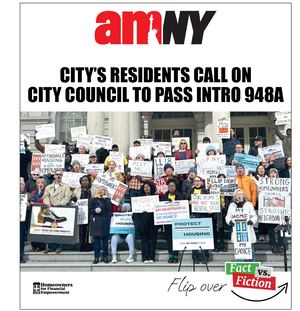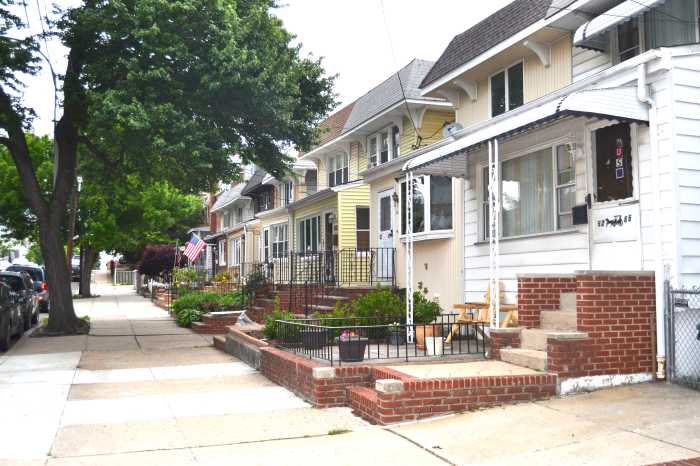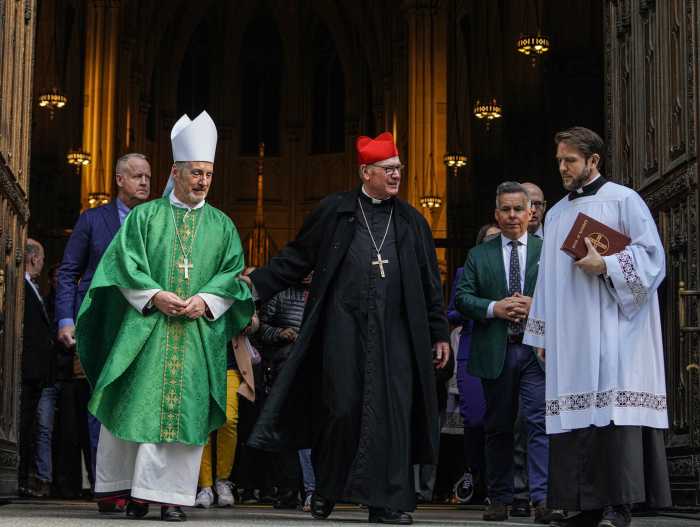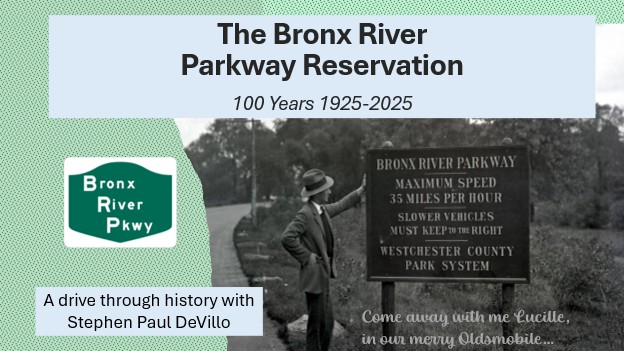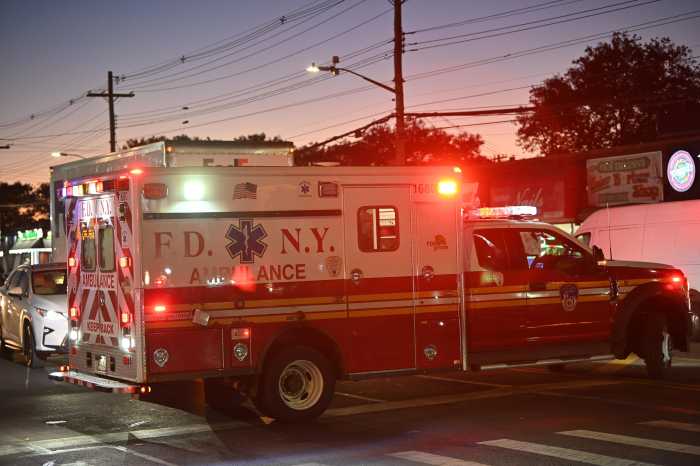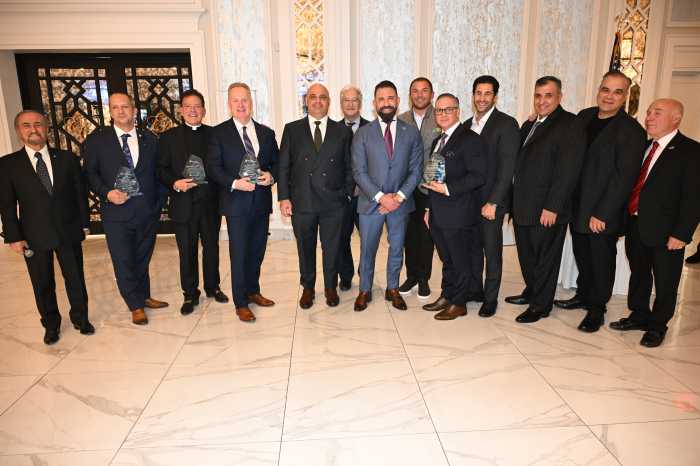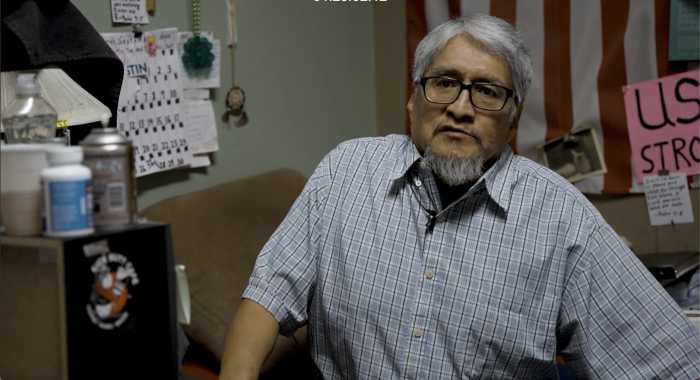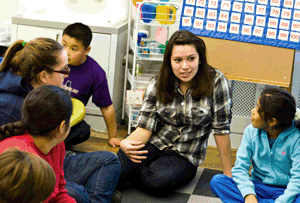 [/media-credit]
[/media-credit]
- A volunteer from nycTIES at a school where the GO Project assists students with special needs by ensuring individual attention both in and out of the classroom.
BY HELAINA N. HOVITZ | Misinformation has led many to believe that Lower Manhattan is solely populated by well-to-do-families with children that attend the city’s top performing schools. In reality, a large fraction of Downtown residents are among some of the more needy families in the city with children in dire need of special support.
Fortunately, GO Project provides year-round educational, emotional, and social support services to over 450 struggling downtown students performing below grade level. These children, who come from low-income households, often lead lives of instability and face serious learning challenges; many of them have parents who work multiple jobs, speak little English and have few resources. The main goal of the non-profit is to help equip students in over 30 public elementary schools with the confidence and skills they need to succeed at school, at home and in life.
Lower East Side schools like P.S. 134, P.S. 137, and P.S. 20 have reported an average of 38 percent proficiency in English and 53 percent in Math. By providing an educational environment for students both after school and on weekends — and for five weeks during the summer — the GO Project assures these children are given individualized attention. The GO Project works with numerous schools below Canal Street including P.S. 2, P.S. 184, and P.S. 124, among others.
The organization also relies almost entirely on volunteers. Luckily, volunteer organizations like nycTIES, which partners young people with local charities, have stepped in to help the GO Project increase their volunteer base.
“The nycTIES volunteers helped us created a better system for volunteer recruitment, giving us new access to many community members and volunteers,” said Erica Ahdoot, executive director at the GO Project. “We were able to reach out to the community in ways we were never able to before.”
The GO Project enlisted nycTIES to put together a professional video for the GO website, which would have normally cost thousands of dollars to produce.
In addition to helping them develop various marketing strategies, volunteer Victor Simoes, 25, who lives in the Wall Street area, organized a group of 30 volunteers to tutor children at the GO Project on Saturday mornings. Rallying volunteers in New York City, he said, isn’t as easy as it may seem.
“Everyone has a day job, and asking to take away from the few free hours people have is difficult,” explained Simoes, who also volunteers as a math teacher at P.S. 188 on Houston Street. “We reached out to large corporations, and some have allowed people to take time out of their workdays to come help.”
By offering varying levels of commitment, nycTIES finds creative ways for young professionals to impact their community, inviting them to “start small and do what excites you.”
“It’s hard to figure out how to volunteer after college. There aren’t many channels to come through independently, especially ones that let you volunteer when you can,” said nycTIES president Elise King. “There’s no required commitment level. If you have a free Saturday, come help.”
Fellow volunteer Rosalyn Sovarimuthu, 28, who works in mergers and acquisitions at a bank, taught a financial literacy course to parents of GO Project children that was so well-received they asked her to teach a second one.
“GO is trying to give kids who come from low income households a fighting chance,” said Sovarimuthu. “I spoke to a little girl who said she liked school but struggled to stay awake during class. She has to wake up at 4am every morning because her mother works far away, and is so exhausted by time she gets to school that she can’t focus.”
By providing free education and family services to academically challenged kindergarten through sixth graders, social workers and volunteers help these students foster the skills they need to succeed at school and make their everyday lives a bit more manageable. Several students have learning disabilities and other emotional and developmental needs, so GO brings in social workers to conduct workshops on mental health. Priority is given to students who attend one of the GO Project’s “target schools”, which are schools that have a larger percentage of free/reduced lunch eligibility and are underperforming by New York City Department Of Education standards. Many GO Project students have a Special Education classification and are assigned Individualized Education Plans as a result of a learning disability, speech or language impairment, or an emotional disturbance.
Keisha Browne, 25, a nycTIES volunteer and public school teacher by day, replaced a third grade head teacher in GO School’s Saturday program.
“As a classroom teacher, I know firsthand what the limitations are when you see kids who need extra help. It makes you wish you had clones that could give those kids individual attention,” said Browne. “GO sends three or four volunteers per classroom to assist teachers during the school day, which makes a big difference for kids who are falling behind and may ‘feel stupid’ because they don’t get it.”
Kids who struggle socially and academically are especially vulnerable to bullying, which is why the GO Project organized a classroom-based intervention at P.S. 124 at 40 Division St., where there was a pressing need. They have since been working closely with their partner public schools to address emerging issues of bullying and peer relationships.
Without intervention, what begins as poor academic achievement or lack of confidence may result in a dislike for school, truancy, and, ultimately, dropping out.
GO parents said the volunteers are crucial to helping their children understand writing and math concepts they have trouble grasping during the regular school day.
“It’s been a blessing for her to get the help she needs,“ said one Downtown parent, who’s 10-year-old daughter has been in the program for three years. “We’ve seen big improvements, and they’ve even brought the fun back into learning for her.”
The GO Project is currently in the process of developing programming for students in sixth through eighth grade.
If you’d like to volunteer with either organization, visit www.nycties.org or www.goprojectnyc.org.
